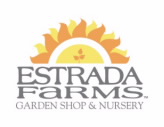Whether your first try at gardening, or your 21st try, a little planning and
record keeping can help your garden be more successful, which of course
means, more fun!
Raili Nieznanski with Estrada Farms shares some ideas for creating your
very own gardener’s almanac.
The idea of planning and keeping a record of planting and harvesting has
been around for decades. Centuries probably. The farmers’ almanac is
just that; a record of weather patterns, frost dates, phases of the moon,
and other folksy tid bits that helped farmers know when and what to plant.
Keeping your own garden journal can help you be more successful in your
gardening efforts, and will make the gardening experience more rewarding
and fun.
The most basic journal will simply record the names of the seeds or plants
you selected, and the date you planted them. The most comprehensive
journal can include notes about everything you do in the garden, including
trimming, fertilizing, watering, and recording rainfall, temperature and
hours of sunlight. It’s up to you how much information, or how little, you
keep. It also depends on what you expect to do with the information later.
Why Keep a Garden Journal
Hopefully your interest in gardening, whether it be decorative or edible
plants, is more than just a fleeting fancy. A commitment to gardening
offers many benefits: fresh air and recreation, creative outlet, saves money,
supplements family food supply, family togetherness, stress relief,
educational… Besides the simple organizational benefits, writing the goal
down and logging your progress helps you learn from mistakes and
improve over time. Writing down what you plan to do, when you plan to do
it, and what you hope to achieve, is a strong motivator for success. When
you set that beautiful flower arrangement on your dining table and serve
those first ripe tomatoes of summer… you will see and taste your success,
and be motivated to do even better the next year.
What to Record
You can record as much or as little as you want in your garden journal. Just
make sure it’s a fun activity rather than a chore. Some suggestions for the
kinds of information you may want to include are:
your goals/plan – what vegetables will your family eat, do you plan to
harvest enough to do some home canning, how will you tackle small space
issues
simple layout of your garden/yard with relevant measurements and
notations about
sunlight and exposure to wind or shade
planting dates for seeds and plants
transplanting dates
source and cost for plants and seeds
receipts and records of purchase
weather particulars such as rainfall, frost dates, temperatures, etc.
plant characteristics, date of germination, date they emerge in spring,
appearance of
blooms, amount of harvest
date of harvest (for vegetables) or cut flowers
date and type of fertilizer or pesticides, or other chemicals applied, and to
which plants
other observations
Additional Information/Items to Save in your Journal
seed packets – included with plant detail record or in separate section
pictures – throughout season or at peak bloom, included with plant detail
or in separate section
reference materials – articles, magazines, book list and comments, any
course materials
daily activities
wish list – plants to consider for the future, possible architectural
considerations like a pergola, hut, water feature or dry river bed
dried blooms
inspirational thoughts or quotes
websites you like and why
recipes for your garden harvest
supplier notes – who you like and who you don’t
costs – keeping all your gardening costs together can be an eye-opener at
the end of the year, and can help you see where your money worked best
for you
Types of Garden Journals
There are several general types of garden journals. Pick the one that works
for you. Some of us are very visual. Some of us more detail oriented. You
may want to spend a lot of time on your journal, or you may want it to be
quick and easy. Consider which journaling style will likely meet your needs
the best. Choose the one that you will actually use.
Shoebox/File Box
This type of journal works best for people who want to save ‘stuff’. A box
or file container with simple dividers allows an easy way to store receipts,
empty seed packets, photos, sketches, even pressed petals or insect
specimens. Keep a pen and a few small zip lock bags in the box for easy
access. If you plan to keep the box in a shed or garage, choose one that is
weather resistant. Simple note cards can be used to record as many or as
few details as you like.
Garden Planner
This type of garden journal would most likely be organized in a binder with
dividers and includes current gardening information and planning tools
such as a layout of your garden with measurements, visual references such
as pictures, and detailed information about bloom time, sunlight and water
requirements, color, and design issues as well as gardening activities
(watering, weeding, fertilizing, etc.) and observations (pests, weather,
bloom and harvest dates). There are many online sources for blank journal
pages that can be slipped into a simple binder. Search for “DIY garden
journal” and many options pop up.
Personal Journal
This journal is like a daily diary. It is organized in chronological order. For
each day that you choose to make an entry, you start a new line right after
your last entry. You make entries daily, weekly, when interesting things
happen, or as you get to them. Sometimes sketches or photos will
accompany the notes, and sometimes not. You can choose a notebook for
this journal, or even a blank calendar with large boxes with enough room
to write in.
Photo Album
Photography is a very popular hobby. Even our cell phones can take high
resolution photos these days. If you’re a visual person, you might be more
motivated by the idea of taking regular photos of your plants, printing
them out, and putting them in a scrap book with simple captions or notes
about the day’s events. This is a great way to get kids excited about
gardening. Take before and after shots, or time lapse photos of seeds
sprouting in the window and of the child harvesting their very own
pumpkin. Photos also help you remember where you planted things and
help you see the difference between the favorable plants and the weeds.
This would most likely be organized in chronological order.
Digital Record Keeping
This is the digital age, and no matter how much we like to get outside and
get our hands dirty, we do love our computers. There are programs
available to download or use online, many of them free, which offer simple
garden planning and fill-in-the-blank record keeping. Some are “free
standing” programs, others are associated with home and garden chains or
gardening magazines. Again, the choice is yours based on how you like to
journal.
Blog It
Seems like everyone has a blog these days. Why not blog about your
gardening experience? Blogs are free, easily accessible to anyone with a
computer, and all the elements discussed above can be easily incorporated
into a simple blog. And with a blog, you can share your progress and
success with friends, family, or your favorite gardening guru.
Estrada Farms is a retail nursery and garden shop catering to the home
gardener and do-it-yourself home landscaper. In addition, we offer special
pricing for landscapers and other commercial projects.
2 Year Tree Guarantee We offer a tree and shrub planting
service. If you let us do the planting, we will guarantee your trees and
shrubs for 2 years.
Professional Advice We offer planning and selection advice. We
will come to your home, take photographs, get measurements, and make
sketches if necessary, to help you plan your purchase and know what to put
where.
Container Planting and Storage You can have the most beautiful
patio containers and hanging baskets in your neighborhood. Bring us your
empty containers and let us plant them up and keep them in our nice warm
greenhouse for a couple weeks. They will be lush and full the moment you
put them out on your porch.
Our location in the center of a growing residential area provides us with
unique opportunities and responsibilities. Besides providing a variety of
high-quality plant and gardening products and services to our friends and
neighbors, we want to offer our location as the center for community
events and activities.
Date Night at Estrada Farms offers a discount to groups of 30 or
more and allows private access either an hour before opening or an hour
after closing.
Neighborhood HOA groups, church groups, clubs, and other groups can
benefit
from this group discount and private access.
Education We offer classes for adults and children. Our kids’
class follows the
Utah State education curriculum and can also be modified to meet the
needs of
your church, scout, or school group.
Party at the Farm Does your family, book club, food club, church
group, or other
social organization want a unique venue for a meeting or party? Consider
Estrada Farms. What could be better than being surrounded by beautiful
lush
plants as you interact and entertain.
Estrada Farms Community Garden allows those living in condos
or apartments
the opportunity to garden as a family and enjoy the fresh, home-grown
produce
not usually available to them.
Estrada Farms Garden Shop & Nursery
1133 W. 3200 N., Lehi, UT 84043
(801) 766-3354
www.estradafarmsnursery.co
m
estradafarms@hotmail.com
Find us on Facebook at https://www.facebook.c
om/EstradaFarms .















Add comment